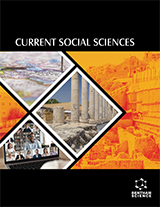Abstract
Background: There is a growing mental health crisis among youth in the United States. The objective of the current study was to conduct a process evaluation of Strengthening Youth Resilience (SYR), a unique program aimed at decreasing youth anxiety and depression via social work internship placements within after-school programs in three historically underserved communities in a large city in Southern California. The SYR program utilizes the School Social Work Practice Model as a framework for interacting with youth within community settings by providing a tiered system of service delivery.
Methods: Focus group discussions and interviews were used to examine the unique perspectives of social work interns, program leaders, and Boys and Girls Clubs of America (BGCA) staff.
Results: Results emphasized the importance of trust, clear communication, and shared decisionmaking as a foundation for successful program site integration. Additionally, several unanticipated barriers to implementation arose, including difficulty obtaining informed parental consent to work individually with youth, challenges aligning internship schedules with the fluid structure of after-school programs, and the need for a private welcoming space to work.
Conclusion: In conclusion, the SYR program successfully integrated within BGCA sites and was able to provide support to youth. BGCA sites expressed great satisfaction with the program and were eager to continue and expand upon their collaboration with the local university.
[http://dx.doi.org/10.1017/ipm.2020.84] [PMID: 32611470]
[http://dx.doi.org/10.1093/bjsw/bcac244]
[http://dx.doi.org/10.1521/978.14625/28806]
[http://dx.doi.org/10.1111/sode.12424] [PMID: 33692608]
[http://dx.doi.org/10.1037/0022-0663.95.1.148]
[http://dx.doi.org/10.1177/2167702618810518] [PMID: 31179165]
[http://dx.doi.org/10.1016/j.ssmph.2020.100549] [PMID: 32099893]
[http://dx.doi.org/10.1016/S0277-9536(02)00480-X] [PMID: 12878105]
[http://dx.doi.org/10.1016/j.jadohealth.2006.09.008] [PMID: 17259062]
[http://dx.doi.org/10.1002/cbm.2149] [PMID: 32535969]
[http://dx.doi.org/10.1016/j.adolescence.2010.01.010] [PMID: 20172603]
[http://dx.doi.org/10.1080/02673843.2022.2032219]
[http://dx.doi.org/10.1207/s15327795jra0501_6]
[http://dx.doi.org/10.1111/bjep.12530] [PMID: 35794814]
[http://dx.doi.org/10.1007/s12310-022-09502-9] [PMID: 35154501]
[http://dx.doi.org/10.1007/s10826-018-1170-9]
[http://dx.doi.org/10.1177/0004867415600076] [PMID: 26296367]
[http://dx.doi.org/10.1016/j.psyneuen.2008.03.008] [PMID: 18602762]
[http://dx.doi.org/10.1016/j.chiabu.2019.104127] [PMID: 31454589]
[http://dx.doi.org/10.18043/ncm.79.2.124] [PMID: 29563312]
[http://dx.doi.org/10.1542/peds.2011-2663] [PMID: 22201156]
[http://dx.doi.org/10.1001/jamanetworkopen.2020.3221] [PMID: 32315069]
[http://dx.doi.org/10.1017/S0033291714002888] [PMID: 25534496]
[PMID: 31751202]
[http://dx.doi.org/10.1016/j.copsyc.2023.101657] [PMID: 37517166]
[http://dx.doi.org/10.1016/j.chiabu.2016.12.012] [PMID: 28056359]
[http://dx.doi.org/10.1093/acrefore/9780199975839.013.1063]
[http://dx.doi.org/10.1016/j.jcrimjus.2020.101769]
[http://dx.doi.org/10.1086/499748]
[http://dx.doi.org/10.3390/ijerph17051729] [PMID: 32155789]
[http://dx.doi.org/10.2307/j.ctv26071r6]
[http://dx.doi.org/10.1079/PNS2004399] [PMID: 15831139]
[http://dx.doi.org/10.5175/JSWE.2012.201000110]
[http://dx.doi.org/10.1177/0020872820949614]
[http://dx.doi.org/10.1108/ET-01-2020-0023]
[http://dx.doi.org/10.1080/10437797.2015.1043201]
[http://dx.doi.org/10.1080/10437797.2020.1723760]
[http://dx.doi.org/10.1093/cs/cds014]
[http://dx.doi.org/10.1016/j.tate.2017.03.018]
[http://dx.doi.org/10.1016/j.jsp.2023.04.003] [PMID: 37507193]
[http://dx.doi.org/10.1080/10705422.2012.699871]
[http://dx.doi.org/10.1080/00981389.2020.1827123] [PMID: 32993446]
[http://dx.doi.org/10.1177/26320770211010817]
[http://dx.doi.org/10.1080/10911359.2020.1822249]
[http://dx.doi.org/10.1177/1077558708317802] [PMID: 18511812]
[http://dx.doi.org/10.1177/2158244020973024]
[http://dx.doi.org/10.1177/1468017318762450]
[http://dx.doi.org/10.1371/journal.pone.0283962] [PMID: 37075049]


















